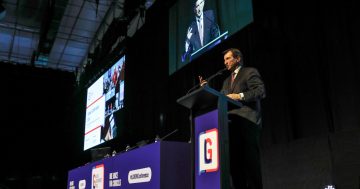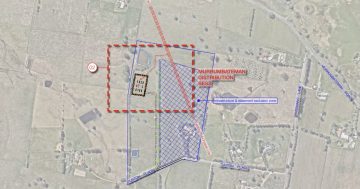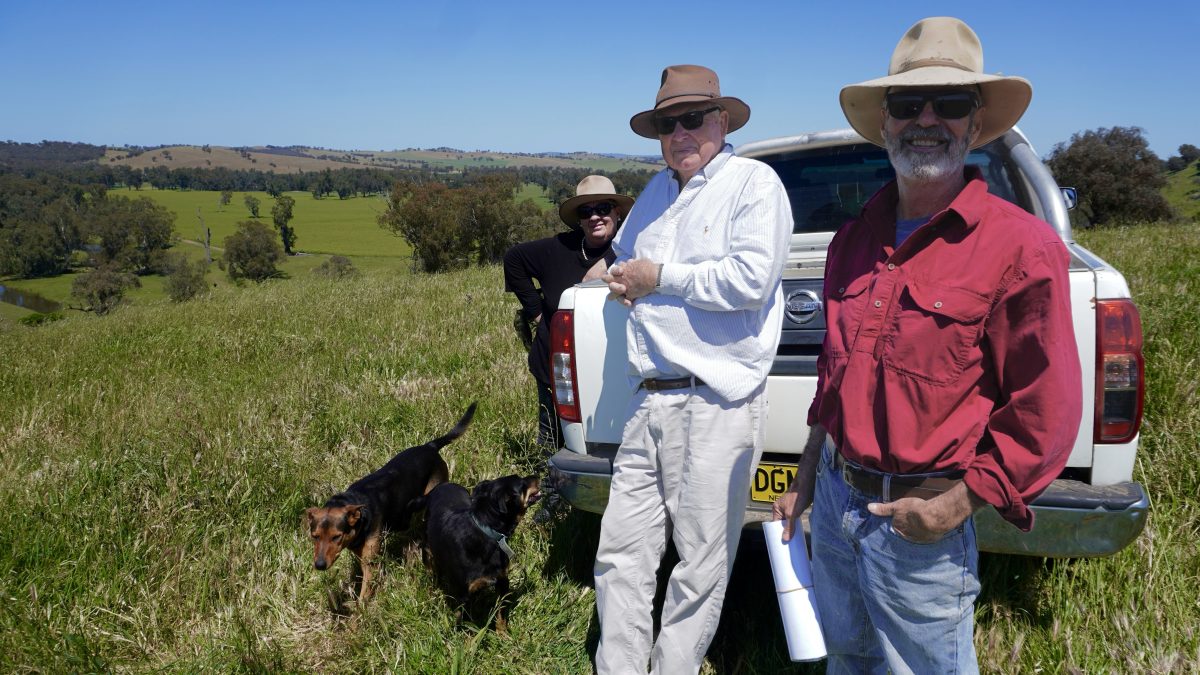
Oura landholder Tom Kelsall (right) with John Blackwell and Deb Paton who are opposed to the location of the abattoir development. Photo: Chris Roe.
Oura landholder Tom Kelsall loves his little corner of the Murrumbidgee with its verdant river frontage and spectacular views across the hills and valleys.
But Tom is one of a number of local farmers who are concerned that a proposed $12 million abattoir development on the adjacent property will spoil the outlook and potentially impact the environment.
“I just want to make it clear that we’re not objecting to the concept,” Tom explained.
“The discussion is about the site, which is an inappropriate location and close to the river in an area that is registered as flood sensitive and groundwater vulnerable.”
The Okeview Pastoral Company operates a 7700-hectare property near Oura, east of Wagga.
They are in the process of submitting an ambitious development application for a private on-farm abattoir to produce ‘carbon neutral’ grass-fed beef.
The plan includes three large buildings and a solar array and is located less than 800 metres from Tom’s boundary on the western side of the vast Okeview Pastoral property, and 11 km from their eastern boundary.
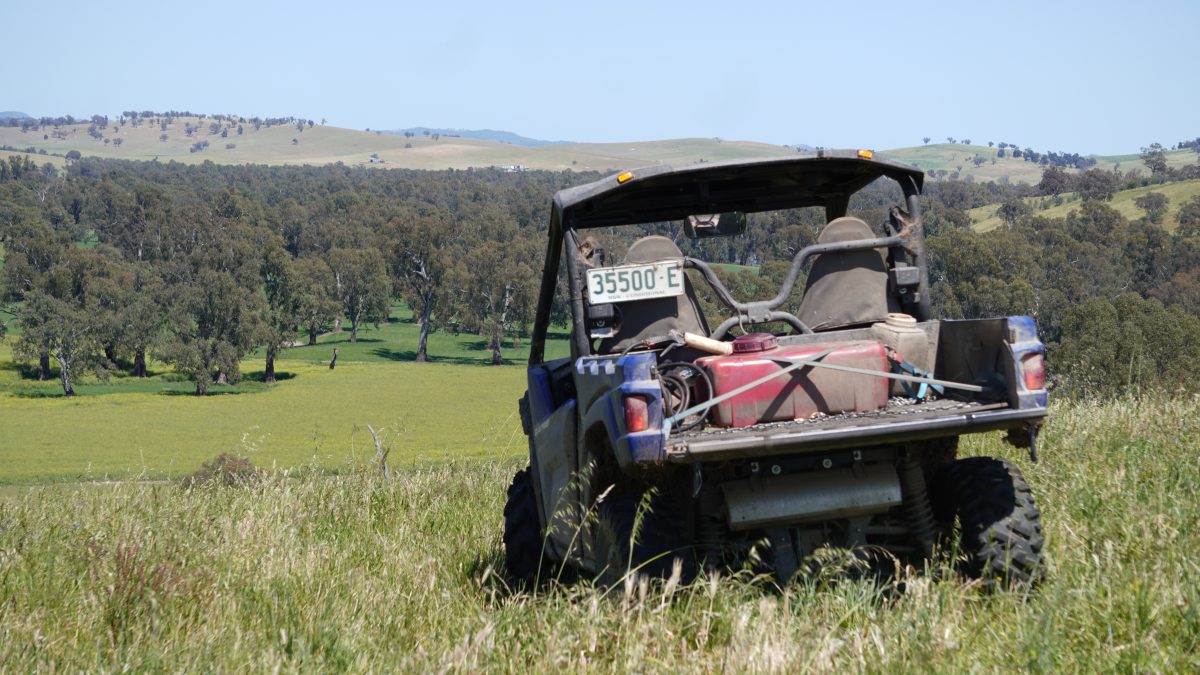
Tom Kelsall’s Oura property boasts spectacular farmland views. Photo: Chris Roe.
“They met with me to explain their proposal and I listened and then went away, thought, reflected and sought expert advice and became very concerned about the location,” Tom said.
As well as the potential environmental impact, Tom is concerned that ‘industrialising’ the site will change the character of the area.
“Once a $12 million facility is built, no farmer will ever buy that farm again,” he explained.
“It’ll only ever be sold to other industrial users like big abattoir operators or big feedlots or a combination of both.”
Tom also fears that, if the abattoir project is approved, it would impact a number of already approved development applications for small lots along the ridge and a nearby tourist venture that overlooks the site.

An artist’s impression of the proposed barn-like abattoir development. Photo: Okeview Pastoral.
Okeview Pastoral CEO Adam Brayshaw said he understood Tom’s concerns but explained that the project was in line with the company’s move into more ethical regenerative farming practices.
“All we ever want it to be is a small boutique facility that enables us to process our own grass-fed livestock,” he said.
“What we’re actually trying to do is to move away from the industrialisation of the agriculture industries which is not something that we’re happy to be a part of anymore.
“This facility has a very small footprint and our aim at the end of it all is to prove that meat can be raised ethically with animal welfare at the fore and in a way that actually enhances the soil and environment.
“The long-term ambition is to be able to provide the Riverina community with a carbon-neutral meat product from paddock to plate.”

The proposed abattoir site is on the ridge near the distant homestead overlooking the floodplain. Photo: Chris Roe.
John Blackwell and Deb Paton own property upstream and have joined Tom and a number of other locals in voicing their concerns through the Oura Riverine Protection group.
“We’ve learned the hard way that there are little things that slip past you, and they’re the things that you realise you should have objected to, or enquired further,” said Deb.
John is an agricultural engineer and an expert in water management and says there are question marks over potential contamination.
“It’s on an overland flow path. It’s near a floodplain. It’s near a pristine river. It’s very close to both Oura and Wagga which use the river, so it seems to me odd that you would put any facility here that has a risk of contaminating that waterway,” he said.
“I just think there are too many unknowns with the soil and the groundwater.”
Tom argues that there are other, more suitable locations that are less likely to impact neighbours and the river but shrugged off suggestions of NIMBYism (not-in-my-backyard).
“In this case, they’re the NIMBYs because they could replicate this proposal only nine kilometers further up the road at their main homestead where it would be in the sight, sound and smell of no one but themselves, but they don’t want that,” he said.
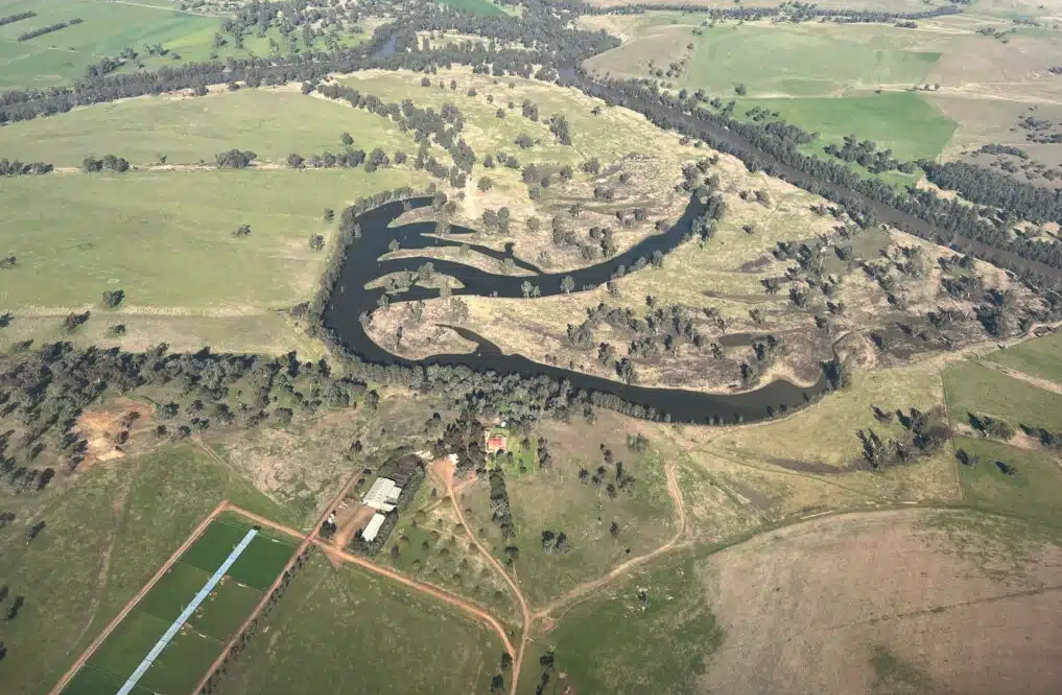
Locals fear that the abattoir’s proximity to the river and lagoons could lead to contamination downstream. Photo: Supplied.
Adam Brayshaw said Okeview Pastoral had considered other sites, but remained confident the proposed project could go ahead without any adverse impact on the surrounding area.
“We compiled an environmental impact statement which I think includes 28 different consultant reports,” he said.
“Whether it be visual impact, groundwater assessment, flooding, bushfire assessment; you name it, it’s been assessed and we’re very environmentally conscious people.
“If we do get to the stage of submitting a development application and Tom, or anyone concerned with what we’re proposing, has the opportunity to read these documents; I hope they will have the same level of confidence and peace of mind that we got when we read them.”

Okeview Pastoral aims to deliver a locally grown, carbon neutral meat product that will go from ‘paddock to plate’ in the Riverina. Photo: Supplied.
While Adam hopes to progress the project in the next 12 months, neighbours Tom, Deb and John are urging planning authorities to take a thoughtful, structured approach to the development of agricultural land.
“There seems to be no master plan for regional development at the moment,” said Tom.
“This could become another example of yet another ad hoc development and if we don’t protect our environment, what the hell are we living for?”









